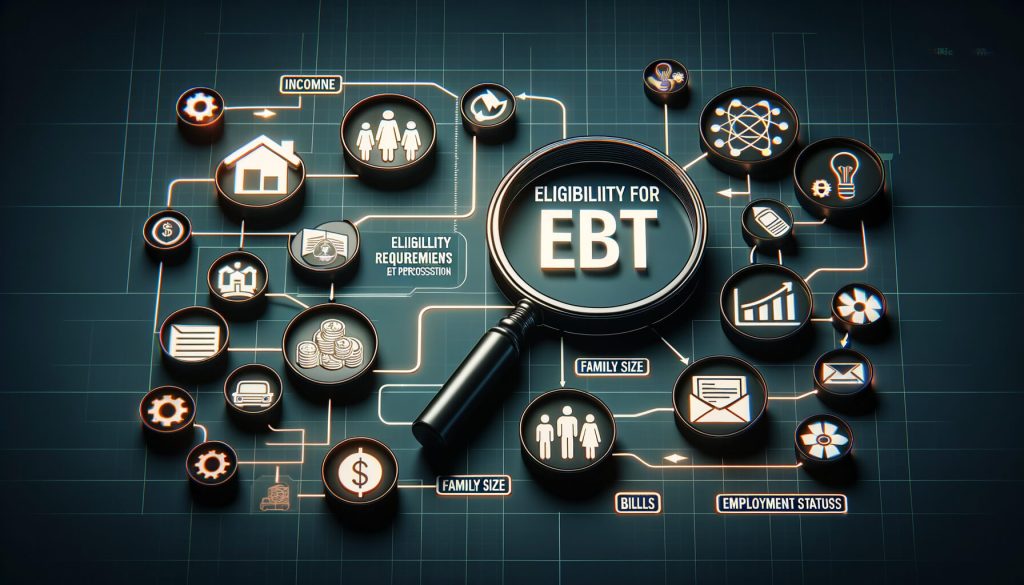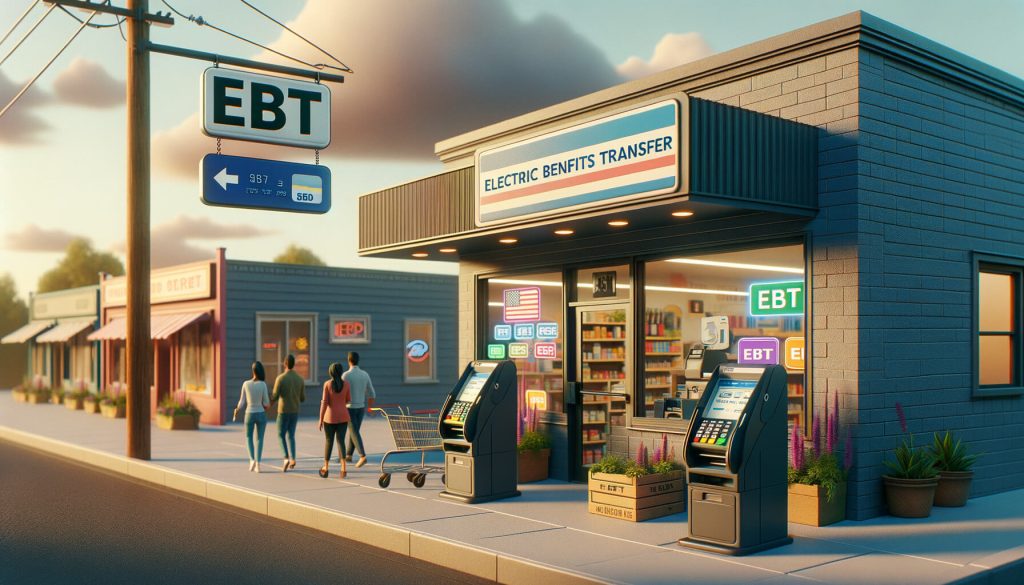
By manoj November 5, 2024
Electronic Benefit Transfer (EBT) payment processing is a system that allows eligible individuals to access government benefits through a debit card. This system is widely used for programs such as the Supplemental Nutrition Assistance Program (SNAP) and the Women, Infants, and Children (WIC) program. EBT payment processing provides a convenient and secure way for recipients to make purchases at authorized retailers.
To understand how to get approved for EBT payment processing, it is essential to have a clear understanding of how the system works. EBT cards are issued to eligible individuals, and these cards are loaded with funds from government benefit programs. When a recipient makes a purchase at a participating retailer, the transaction is processed through the EBT payment processing system, deducting the appropriate amount from the card balance.
Eligibility Requirements for EBT Payment Processing

Before applying for EBT payment processing, it is crucial to ensure that your business meets the eligibility requirements. To be eligible, your business must be authorized to accept EBT payments and comply with the regulations set by the United States Department of Agriculture (USDA). The USDA oversees the EBT program and sets the guidelines for participating retailers.
Some of the eligibility requirements include:
- Retailer Type: Your business must fall into one of the approved retailer types, such as grocery stores, supermarkets, farmers markets, or authorized online retailers.
- Stocking Requirements: Your business must meet certain stocking requirements, including offering a variety of staple food items and maintaining an inventory that meets the needs of EBT recipients.
- Licensing and Permits: Your business must have all the necessary licenses and permits required by your state and local authorities.
- Compliance with SNAP Regulations: Your business must comply with the regulations set by the SNAP program, including pricing restrictions and the prohibition of certain items.
It is essential to thoroughly review the eligibility requirements before applying for EBT payment processing to ensure that your business meets all the necessary criteria.
Choosing the Right EBT Payment Processor

Once you have determined that your business is eligible for EBT payment processing, the next step is to choose the right EBT payment processor. An EBT payment processor is a company that facilitates the electronic transfer of funds between the EBT cardholder and the retailer.
When selecting an EBT payment processor, consider the following factors:
- Experience and Reputation: Look for a processor with a proven track record in handling EBT payments. Check for reviews and testimonials from other retailers to gauge their reliability and customer service.
- Integration Options: Ensure that the processor can seamlessly integrate with your existing point-of-sale (POS) system or provide you with a compatible POS system if needed.
- Pricing Structure: Compare the pricing structures of different processors to find the one that offers competitive rates and transparent fees.
- Customer Support: Choose a processor that provides reliable customer support, as any issues with EBT payment processing can impact your business operations.
Research multiple EBT payment processors and request quotes to make an informed decision based on your business’s specific needs.
Preparing Your Business for EBT Payment Processing

Before applying for EBT payment processing, it is crucial to prepare your business to ensure a smooth transition. Here are some steps to consider:
- Familiarize Yourself with EBT Regulations: Understand the regulations and guidelines set by the USDA for EBT payment processing. This will help you ensure compliance and avoid any potential issues.
- Train Your Staff: Provide comprehensive training to your staff on how to handle EBT transactions, including the proper use of EBT equipment and understanding the different types of EBT benefits.
- Update Your POS System: Ensure that your POS system is compatible with EBT payment processing. If necessary, upgrade or replace your system to accommodate EBT transactions.
- Stock Up on Approved Items: Review the list of approved items for EBT purchases and ensure that your inventory meets the requirements. This includes offering a variety of staple food items and complying with any restrictions on non-food items.
By adequately preparing your business for EBT payment processing, you can streamline operations and provide a seamless experience for EBT recipients.
The Application Process for EBT Payment Processing
Once you have prepared your business, it is time to begin the application process for EBT payment processing. The application process may vary slightly depending on the EBT payment processor you choose, but generally, it involves the following steps:
- Gather Required Documents: Collect all the necessary documents, such as your business license, permits, and any other documentation required by the EBT payment processor.
- Complete the Application Form: Fill out the application form provided by the EBT payment processor. Provide accurate and detailed information about your business, including your contact information, business type, and inventory details.
- Submit the Application: Submit the completed application form along with any supporting documents required by the EBT payment processor. Ensure that all information is accurate and up to date.
- Wait for Approval: The EBT payment processor will review your application and may conduct a site visit to verify your eligibility. The approval process can take several weeks, so be patient during this time.
- Set Up EBT Equipment: Once your application is approved, the EBT payment processor will provide you with the necessary equipment, such as a card reader or PIN pad, to process EBT transactions. Follow the instructions provided to set up the equipment correctly.
Common Mistakes to Avoid in EBT Payment Processing Applications

When applying for EBT payment processing, it is essential to avoid common mistakes that can delay or jeopardize your application. Here are some mistakes to avoid:
- Inaccurate Information: Ensure that all the information provided in your application is accurate and up to date. Double-check all details, including your business address, contact information, and inventory details.
- Missing Documents: Make sure you include all the required documents with your application. Missing documents can delay the approval process or result in a rejection.
- Non-Compliance with Regulations: Familiarize yourself with the regulations set by the USDA for EBT payment processing and ensure that your business complies with all the requirements. Non-compliance can lead to application rejection or even penalties.
- Poor Record-Keeping: Maintain accurate records of your EBT transactions and any related documentation. This will help you stay organized and provide necessary information if requested by the EBT payment processor or USDA.
By avoiding these common mistakes, you can increase your chances of getting approved for EBT payment processing and ensure a smooth application process.
Understanding EBT Payment Processing Fees
EBT payment processing fees can vary depending on the EBT payment processor you choose and the specific services they offer. It is essential to understand the different types of fees associated with EBT payment processing to make an informed decision. Here are some common fees to consider:
- Transaction Fees: These fees are charged for each EBT transaction processed. Transaction fees can be a flat rate or a percentage of the transaction amount.
- Monthly Fees: Some EBT payment processors charge a monthly fee for using their services. This fee covers the cost of maintaining and supporting the EBT payment processing system.
- Equipment Fees: If you need to purchase or lease EBT equipment, such as card readers or PIN pads, there may be equipment fees associated with it. These fees can vary depending on the type of equipment and the EBT payment processor.
- Chargeback Fees: In the event of a disputed transaction or a chargeback, some EBT payment processors may charge a fee to cover the administrative costs associated with resolving the issue.
It is important to carefully review the fee structure of different EBT payment processors and consider the overall cost of their services before making a decision.
Troubleshooting Common Issues in EBT Payment Processing
While EBT payment processing is generally a reliable system, there can be occasional issues that may arise. Here are some common issues and troubleshooting tips:
- Connectivity Problems: If you experience connectivity issues with your EBT equipment, ensure that it is properly connected to your POS system and that all cables are securely plugged in. Restarting the equipment or contacting your EBT payment processor’s customer support can help resolve connectivity problems.
- Declined Transactions: If a transaction is declined, check the EBT card balance to ensure there are sufficient funds. If the balance is adequate, verify that the transaction amount does not exceed the allowed limit for EBT purchases. If the issue persists, contact your EBT payment processor for further assistance.
- Equipment Malfunction: In the event of equipment malfunction, follow the troubleshooting instructions provided by your EBT payment processor. If the issue cannot be resolved, contact customer support for assistance or request a replacement.
- Reporting Errors: If you notice any discrepancies or errors in your EBT transaction reports, contact your EBT payment processor to investigate and resolve the issue. Accurate reporting is crucial for maintaining compliance and ensuring the integrity of your EBT payment processing.
By being proactive in troubleshooting common issues, you can minimize disruptions to your EBT payment processing and provide a seamless experience for your customers.
Frequently Asked Questions (FAQs)
Q1: Can any business accept EBT payments?
No, only authorized retailers that meet the eligibility requirements can accept EBT payments.
Q2: How long does the EBT payment processing application process take?
The application process can take several weeks, depending on the EBT payment processor and any additional verification required.
Q3: Can I use my existing POS system for EBT payment processing?
In most cases, you can integrate EBT payment processing with your existing POS system. However, compatibility may vary, so it is essential to check with your EBT payment processor.
Q4: Are there any restrictions on what can be purchased with EBT benefits?
Yes, there are restrictions on the types of items that can be purchased with EBT benefits. Generally, EBT benefits can be used to purchase staple food items, but restrictions may apply to non-food items.
Q5: What should I do if I suspect fraudulent activity with an EBT transaction?
If you suspect fraudulent activity, contact your EBT payment processor and follow their instructions for reporting and resolving the issue.
Conclusion
Getting approved for EBT payment processing requires understanding the system, meeting eligibility requirements, choosing the right processor, and preparing your business accordingly. By following the steps outlined in this guide, you can navigate the application process successfully and ensure a seamless EBT payment processing experience for your business and its customers.
Remember to stay informed about EBT regulations, avoid common mistakes, and troubleshoot any issues that may arise. With EBT payment processing in place, you can provide a convenient and accessible payment option for eligible individuals while expanding your customer base.